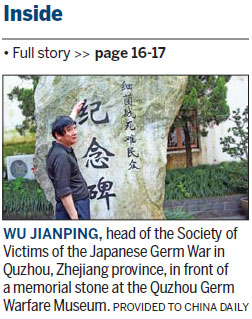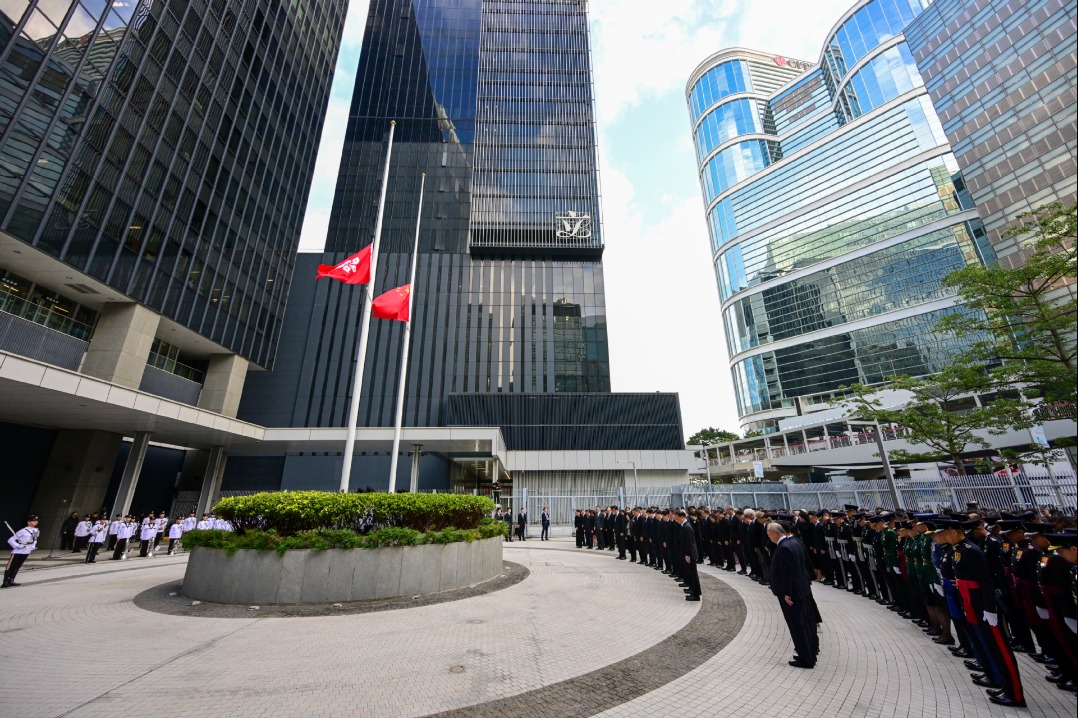Curing a 'disease from history'

More than 70 years after World War II, elderly people in East China villages may at last find relief from the effects of Japanese biological weapons

Sitting in the dark in his small house, with a colorful painting of the god of fortune hanging on the wall, Wei Hongfu was as immobile as the wooden beams that have supported his roof for 40 years.
"New ulcers and old scars - they never heal and probably never will," he says, rolling up his pants legs.
Creeping across the lower part of both legs was a sprawling, grotesque, black and brown bulge, scored with pinkish flesh that resembled a spider's legs. Underneath it were bubbles of pus.
"Sometimes, it relents for a period of time, only to make a vehement comeback and invade more (of my legs)," he says.
Yet on a warm morning in early May, the 88-year-old was told that the ailment that has tormented him since he was 14 may soon end.
"They've had their hopes rise and fall so many times that most of them dare not hope anymore," says Wu Jianping. Wu is the head of an activist group, Society of Victims of the Japanese Germ War, in Quzhou, a city in Zhejiang province.
zhaoxu@chinadaily.com.cn
(China Daily European Weekly 07/15/2016 page1)
Today's Top News
- Chinese landmark trade corridor handles over 5m TEUs
- China holds first national civil service exam since raising eligibility age cap
- Xi's article on CPC self-reform to be published
- Xi stresses improving long-term mechanisms for cyberspace governance
- Experts share ideas on advancing human rights
- Japan PM's remarks on Taiwan send severely wrong signal






























